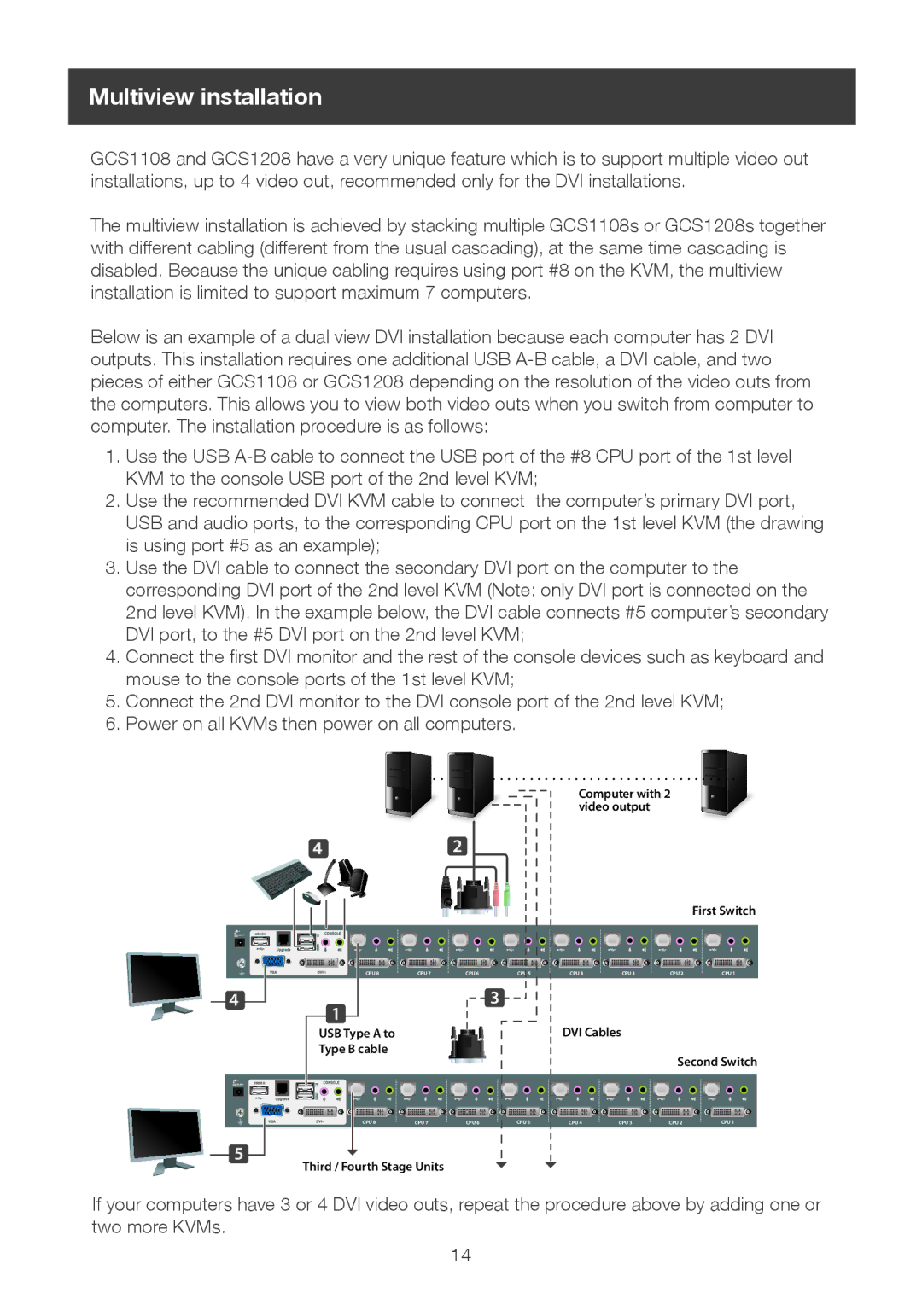
Multiview installation
GCS1108 and GCS1208 have a very unique feature which is to support multiple video out installations, up to 4 video out, recommended only for the DVI installations.
The multiview installation is achieved by stacking multiple GCS1108s or GCS1208s together with different cabling (different from the usual cascading), at the same time cascading is disabled. Because the unique cabling requires using port #8 on the KVM, the multiview installation is limited to support maximum 7 computers.
Below is an example of a dual view DVI installation because each computer has 2 DVI outputs. This installation requires one additional USB
1.Use the USB
2.Use the recommended DVI KVM cable to connect the computer’s primary DVI port, USB and audio ports, to the corresponding CPU port on the 1st level KVM (the drawing is using port #5 as an example);
3.Use the DVI cable to connect the secondary DVI port on the computer to the corresponding DVI port of the 2nd level KVM (Note: only DVI port is connected on the 2nd level KVM). In the example below, the DVI cable connects #5 computer’s secondary DVI port, to the #5 DVI port on the 2nd level KVM;
4.Connect the first DVI monitor and the rest of the console devices such as keyboard and mouse to the console ports of the 1st level KVM;
5.Connect the 2nd DVI monitor to the DVI console port of the 2nd level KVM;
6.Power on all KVMs then power on all computers.
![]() . . . . . . . . . . . . . . . . . . . . . . . . . . . . . . . . . . . . . . . . . . . .
. . . . . . . . . . . . . . . . . . . . . . . . . . . . . . . . . . . . . . . . . . . .
Computer with 2 video output
42
First Switch
4
5
| CPU 8 | CPU 7 | CPU 6 | CPU 5 | CPU 4 | CPU 3 | CPU 2 | CPU 1 |
1 |
|
|
| 3 |
|
|
|
|
|
|
|
| DVI Cables |
|
|
| |
|
|
|
|
|
|
| ||
USB Type A to |
|
|
|
|
|
| ||
Type B cable |
|
|
|
|
|
|
| |
Second Switch
CPU 8 | CPU 7 | CPU 6 | CPU 5 | CPU 4 | CPU 3 | CPU 2 | CPU 1 |
Third / Fourth Stage Units
If your computers have 3 or 4 DVI video outs, repeat the procedure above by adding one or two more KVMs.
14
